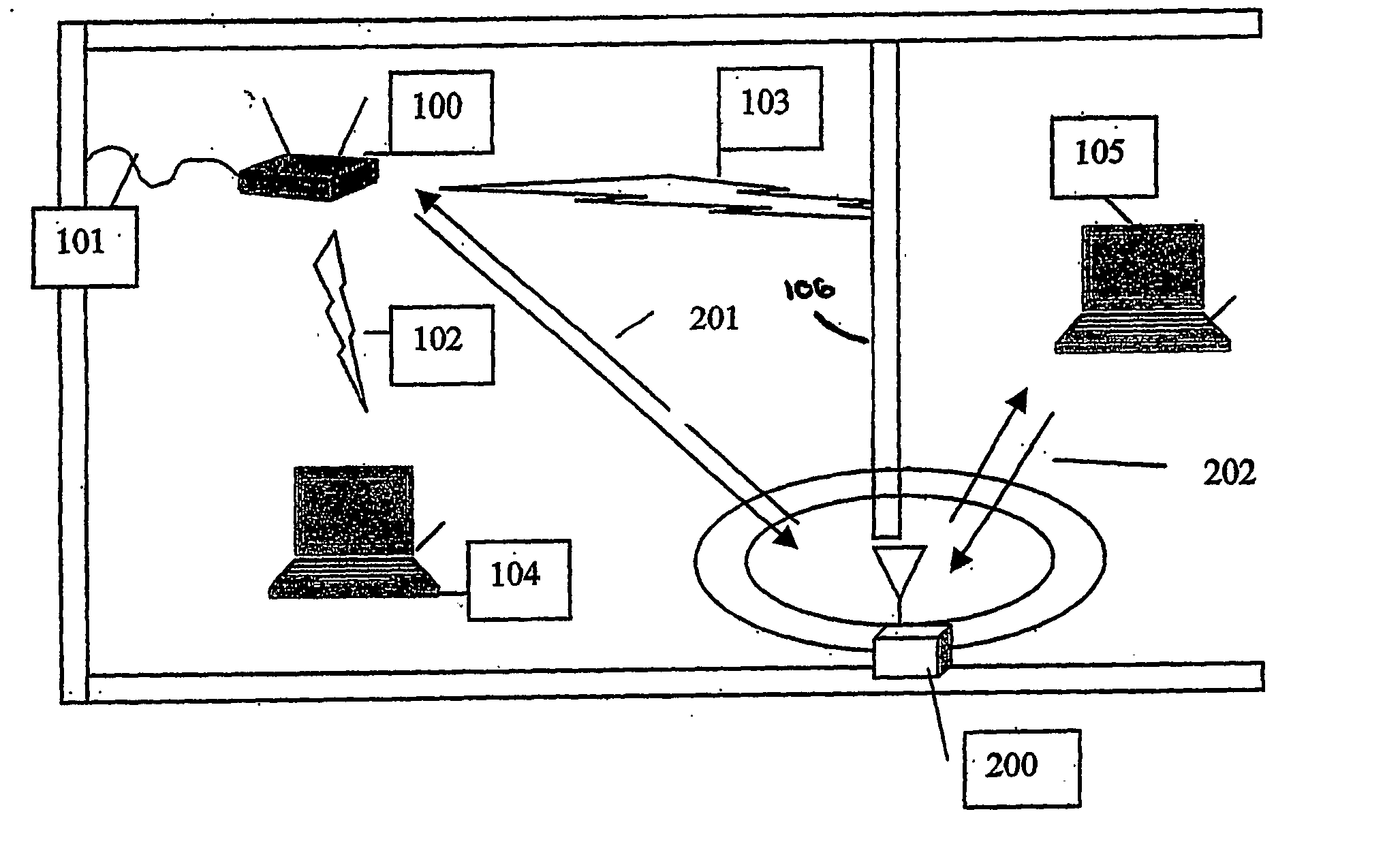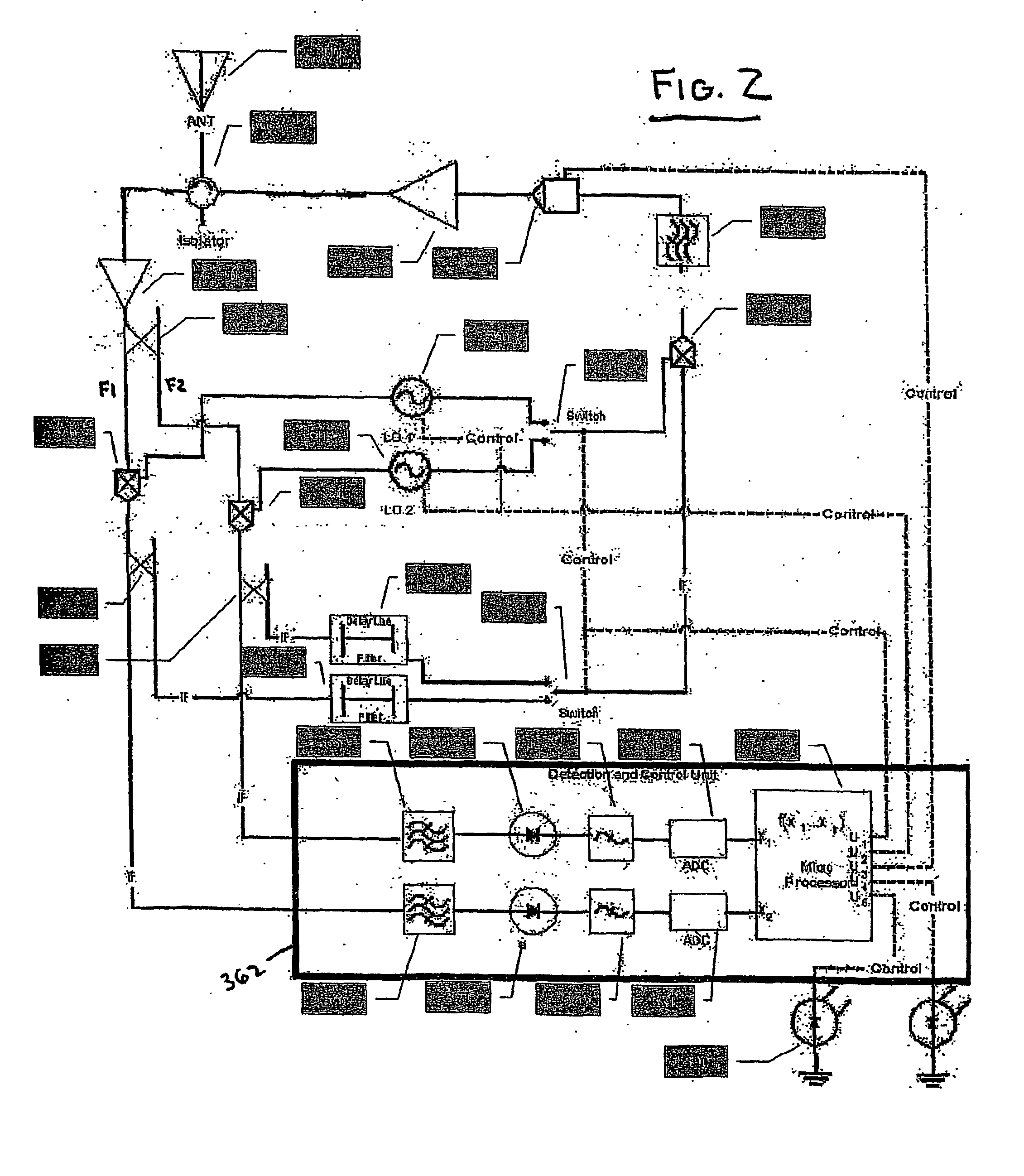Wireless local area network repeater
a repeater and local area network technology, applied in the field of repeaters, can solve the problems of lack of performance, spontaneous generation and transmission of wireless network nodes, and rarely realized performance levels, and achieve the effects of high-speed communication, small repeater and relatively inexpensive cos
- Summary
- Abstract
- Description
- Claims
- Application Information
AI Technical Summary
Benefits of technology
Problems solved by technology
Method used
Image
Examples
Embodiment Construction
[0015] Referring now to FIG. 1, a wide area connection 101, which could be an Ethernet connection, a T1 line, a wideband wireless connection or any other electrical connection providing data communication, is connected to a wireless gateway, or access point, 100. The wireless gateway 100 sends RF signals, such as IEEE 802.11 packets or signals based upon Bluetooth, Hyperlan, or other wireless communication protocols, to client devices 104, 105, which may be personal computers, personal digital assistants, or any other device capable of communicating with other like devices through one of the above mentioned wireless protocols. Respective propagation, or RP, paths to each of the client devices are shown as 102, 103.
[0016] While the signal carried over RF path 102 is of sufficient strength to maintain high-speed data packet communications between the client device 104 and the wireless gateway 100, the signals carried over the RF path 103 and intended for the client device 105 would b...
PUM
 Login to View More
Login to View More Abstract
Description
Claims
Application Information
 Login to View More
Login to View More - R&D
- Intellectual Property
- Life Sciences
- Materials
- Tech Scout
- Unparalleled Data Quality
- Higher Quality Content
- 60% Fewer Hallucinations
Browse by: Latest US Patents, China's latest patents, Technical Efficacy Thesaurus, Application Domain, Technology Topic, Popular Technical Reports.
© 2025 PatSnap. All rights reserved.Legal|Privacy policy|Modern Slavery Act Transparency Statement|Sitemap|About US| Contact US: help@patsnap.com



